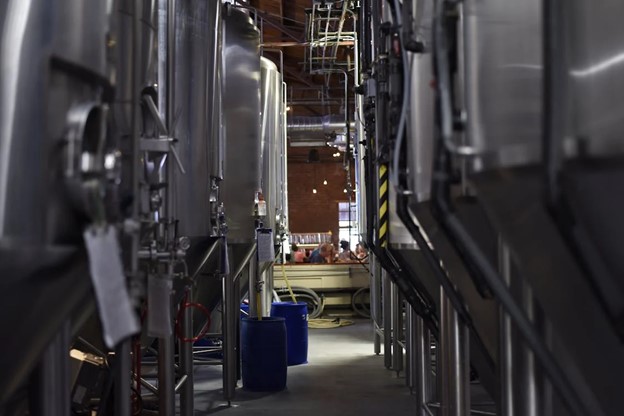My blog focuses on Financial Literacy/Money, Business/Entrepreneurship and Technology. If you are running a manufacturing business, space is a key consideration. Often times maximizing the space you have will increase your profits. The following contributed post is entitled, How Do Manufacturing Spaces With Limited Space Function?
* * *

When you think of a factory, you’re likely to think of a huge, intimidating space, filled to the brim with equipment. If you have a certain old-fashion concept, you might imagine steam bursting from every pipe and huge wheels churning. While it’s true that factories have changed quite a lot over the years, the fact is that each one needs to be designed to a specific space limitation. But what if your own warehouse options are relatively small?
Well, limited manufacturing space doesn’t automatically mean limited production capacity. Factories around the world operate in confined areas, particularly in dense urban environments where real estate is quite expensive, such as in cities like Tokyo or Hong Kong, where multi-story manufacturing facilities are the norm.
Using whatever space you have to the best of your ability is, of course, a good place to start. That means utilizing each square foot effectively. But how do modern businesses even achieve this? We’ll consider that, below:
Tiered Levels of Production
Multi-level manufacturing, if designed carefully, allows you to stack those production processes vertically, connecting different floors through equipment placement. This might be the norm in certain factories such as those that produce spirits, where fermentation requires long pipes to ensure alcoholic content separates. In more usual setups, overhead cranes and automated lifting systems can move materials between levels, but it’s important to plan workflows to prevent bottlenecks and potential safety clashes. If you can get vertical integration right with secure floors, it often works better than expected, and gravity can actually assist material flow in some processes. That means vertical alternatives can even reduce energy consumption compared to all your planning being limited to a 2D plane.
Raised Storage
Vertical space can help even further, as clever storage solutions can help you keep access to resources close to hand without blocking your walkways or safety areas. If you really want to get innovative, “high-density storage systems” use “automated retrieval” methods to access materials stored well above the usual height they could otherwise. Think of warehouse planning but in an automated form.
Mezzanine platforms can be installed too if needed, because they can provide additional storage areas without taking up ground-level workspace, but of course the weight and handling of such items needs to be considered. Some facilities even implement rotating storage systems that allow you to switch each set of options out per production method being used. Outsourced manufacturers often use systems like this as they switch between different orders.
Ventilation & Environmental Control
As always, confined spaces require extra attention to air quality and temperature management, especially in manufacturing spaces. Normal ventilation systems might not suit multi-level operations, so careful placement of air handling units, combined with smart airflow design, is often an essential investment to make when starting out. Some facilities also apply zone-based environmental control, allowing different areas to maintain specific conditions without affecting nearby processes, such as paint rooms that have highly specialized filtration ventilation systems in place too.
With this advice, we hope you can continue managing your manufacturing needs with care. Just keep in mind that operating in limited space doesn’t mean compromising on quality or output – it just requires more thoughtful planning.
